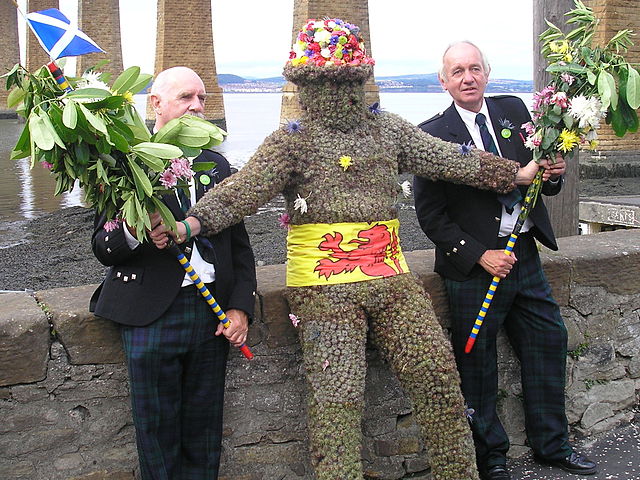This article originally appeared in The Skeptic, Volume 3, Issue 5, from 1989.
“If you’re so skeptical…” a colleague said to me the other day. I wondered what I’d said, what sort of hole I’d dug for myself, what incriminating evidence I was about to face. “If you’re so skeptical, why do you believe in all that folklore rubbish? People dancing round maypoles, wearing antlers, dressing wells with flowers and bearing rushes? What’s it supposed to achieve? Good luck? Prosperity? A fruitful harvest? In this day and age, it’s ridiculous. Why don’t you and your lot tell them it’s all rubbish?”
“Me and my lot”? I felt like a hit-man in some sort of skeptical Mafia. But did she have a point? In one sense, I think she did. For instance, I cannot honestly believe that the locals in the Helston Furry Dance in Cornwall are really driving out the darkness of Winter and welcoming in the luck of Summer. Nor can I believe that the bizarre South Queensferry Burryman – covered from head to toe with sticky thistle burrs – keeps the town in good fortune as long as his annual Parade is observed. And I cannot believe that whoever draws the Cream of the Well – the first water – on New Year’s morning will be certain of good luck in the coming year.

Having said this, why, last New Year, was I the First Foot – the dark-haired man standing in the cold outside the front door at a minute to midnight, with a penny in my pocket, a lump of coal in one hand and a piece of bread in the other? If I don’t believe and if, as I suspect, many others who take part in customs don’t believe, why do we all do it?
The answer, of course, is that there is far more to ritual than a claimed supernatural result. Rituals in themselves cannot affect the material universe, but they can have great importance and meaning for individuals, and for society.
So can we believe and not believe, at the same time? Bergen Evans, in his classic book The Natural History of Nonsense says that “we function on a dozen different levels of intelligence”. He is surely correct, but – call me a traitor if you will – I find his relentless cut-and-dried exposure of human error and stupidity wearisome. Naturally I don’t think that birds choose their mates on St Valentine’s day, but it’s such a lovely idea…
Coincidentally, the previous evening I had watched The Wicker Man, an obscure (but now cult) film from the early seventies. In it, Neil Howie (Edward Woodward) is a devoutly religious Presbyterian police sergeant and lay preacher who has been called to a remote Scottish island – Summerisle – to investigate the disappearance of a young local girl. In fact, there is no missing girl; Sergeant Howie has been chosen for his special qualities and lured to Summerisle for a quite different reason. The island’s fruit and crops have failed, and one more failure would mean disaster for the island.
According to the tradition of the island, a sort of folky druidic mish-mash served up by Lord Summerisle – Christopher Lee at his full height – there is only one solution: to appease the Goddess of the Sun and the Orchards with the dreadful sacrifice of a true Christian believer. Sergeant Howie is imprisoned in a huge wickerwork pyre in the shape of man, and burns to a martyr’s death.
It’s a good yarn, with the subtle twist that you’re never quite sure whether Lord Summerisle really believes in what he’s doing. Is the ‘religion’, with all its traditional elements of hobby-horse, fool and teaser, a religion at all? Is it genuine folk-memory, of the kind – albeit free of sacrifice – that survives to this day around the country? Or is it all a cynical manipulation by Lord Summerisle?
It is interesting to consider the question of why we sometimes accept and do things which – if we try to intellectualise – appear hard to justify. However you care to explain it, the fact is that ordinary people do get up to extraordinary things.



